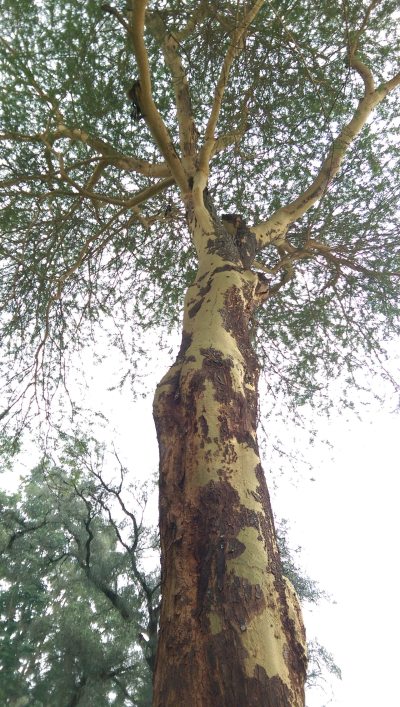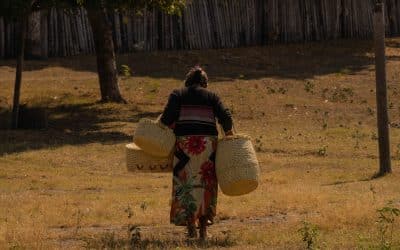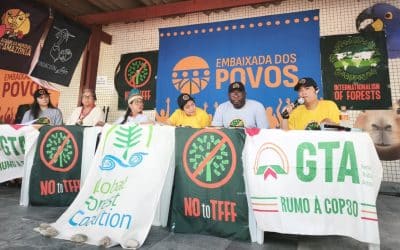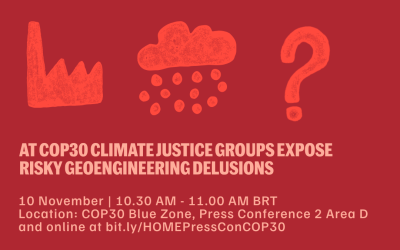By Coraina de la Plaza*
The Forest Investment Program (FIP) became operational in 2009 and is one of the programmes under the World Bank-administered Climate Investment Fund (CIF). The FIP mainly aims to mobilise funds to provide direct forestry-related investments to developing countries to support their development and REDD+ objectives. The FIP works in collaboration with other REDD+ related funds, such as the Forest Carbon Partnership Facility (FCPF), the Global Environmental Facility (GEF), and the UN-REDD Programme.
In addition, the FIP has two specific funding windows. One is the Dedicated Grant Mechanism (DGM) for Indigenous Peoples and Local Communities, which is meant to support their participation in the development of the FIP investment strategies, programmes and projects. The second one is the Private Sector Set-Aside (PSSA), which provides incentives for the private sector to engage in REDD+.
Currently, there are 23 countries listed on the FIP webpage. From this total, 14 have already seen their Investment Plan (IP, or FIP-IP) approved, becoming official pilot countries: Brazil, Burkina Faso, Congo Republic, Côte d’Ivoire, Democratic Republic of Congo, Ecuador, Ghana, Guatemala, Indonesia, Mexico, Mozambique, Nepal, Peru and Lao PDR.
The remaining nine countries are still elaborating their IPs. They are Bangladesh, Cambodia, Cameroon, Guyana, Honduras, Rwanda, Tunisia, Uganda and Zambia.[1]
It is particularly worrying that after the Paris Agreement on climate change, the ‘Intended Nationally Designed Commitments’ (INDCs) that governments submitted to UNFCCC may become a key source of information for developing countries´ FIP-IPs. The INDCS are notable for their overall lack of ambition, and the fact that they reveal that some key forest countries actually plan to continue, some way or the other, with deforestation activities.
FIP manages and mobilises finance to support pilot countries. By June 2015 pledges totalling US$ 787 million had been secured and it had a portfolio of 47 projects at varying stages of development and implementation. According to the Administrative Unit (AU), the FIP is “currently the largest global forestry investment fund with a focus on Phase 2 of the REDD+ financing architecture.” [2]
However, while USS 787 million of pledged money and a portfolio of 47 projects might look like considerable progress, as the old saying goes, not all that glitters is gold. The truth is that the FIP is facing problems, which include limited availability of resources. An example that illustrates this quite well is uncertainty about future funding for the nine countries currently elaborating their IPs. The FIP will provide US$ 250,000 to support each IP preparation but as the AU noted, “with the clear understanding that there are no FIP resources currently available for the implementation of these investment plans.” The AU also asked these countries to search for alternative sources of funding for their IPs. One wonders whether it makes sense, in a situation of economic constraint, to provide new countries with USS 250,000 for their IP preparations, and to keep adding new pilot countries to the list, if there is no guarantee that they will get the future funds needed to actually implement those plans?
In fact mobilisation of funds has also become a massive headache for the FIP, and all CIF programs in general. This is likely to result in a drift towards the dangerous path of turning to the profit-oriented private sector as an alternative source of finance. There is already evidence of this happening. During the last Spring Meetings of the World Bank, in April 2016, the G24 demanded that the CIFs should be urgently replenished, and they suggested doing so with multilateral development banks helping to mobilise the private sector.[3]
Another issue that calls out for attention is the fact that although the FIP became operational in 2009, by May 2016 only US$ 36.1 million of the pledged US$ 787 had actually been disbursed! In fact, if one compares it to what has been committed, the average disbursement rate in the initial eight FIP pilot countries is just 13.9% (although this varies greatly among countries (eg. for Indonesia it is 44% while for Brazil it is 1%).
On the top of all this, when you look at the data regarding grants and concessional loans, it becomes clear that the problem is even worse. The FIP has promised the ‘newbies’—that is FIP pilot countries in Congo Republic, Côte d’Ivoire, Ecuador, Guatemala, Mozambique and Nepal—a total of US$ 24 million each. However, when you dig down and look at the details of the balance between grants and loans it becomes evident that for these countries, this will be more of a burden than a support.
-
Grants (US$ million)
Loans (US$ million)
Congo Republic
6,1
17,9
Côte d’Ivoire
8,2
15,8
Ecuador
3,15
20,85
Guatemala
3,15
20,85
Mozambique
10,8
13,2
Nepal
6,1
17,9
Source: based on table presented at the FIP Sub-Committee meeting in November 2015 by AU, CIF
The fact that the new FIP pilot countries are getting larger loans than grants means that they will be increasing their risk of all the old known problems of indebtedness, in this case in the forestry sector. Accepting loans also implies that the forestry sector has to be profit-oriented so that the countries can pay the loans back, potentially leading to further deforestation and forest degradation in a bid to earn income from the expansion of tree plantations.[4]
And, even more worryingly, the scarce money that the FIP does have is also intended to be allocated to projects, or IPs that support projects, which are in many instances largely based on tree plantations—instead of supporting initiatives that truly support reductions of deforestation and forest degradation.
This is very surprising given the fact that many of the national IPs explicitly acknowledge plantations as a key driver of forest degradation. Yet, if you continue reading the same IPs, you will find that most of them also have contradictory references (implicit or explicit) about the benefits that plantations can bring in terms of reducing forest loss. And even when there is no explicit mention of plantations, the definition of forests in the IPs elaborated by some countries is so weak and so broad that it leaves the window open for the further expansion of plantations with the FIP´s support.
For example, the concept proposal for the “Project for the Development of Agroforestry in Four Provinces” (PRODAF) in the Democratic Republic of Congo illustrates very well the (potential) relationship between the FIP and tree plantations. This project is based on obtaining support to establish monoculture tree plantations in different areas of DRC as a way of reducing deforestation.
It is important to mention that the consideration of the concept proposal for this project has been deferred until additional funds become available, so it hasn’t been rejected or approved so far, just deferred. However, the expert group, the AU and Civil Society Observers have all raised their concerns about this project for a variety of reasons including: i) its focus on the establishment of monoculture plantations, mainly palm oil in degraded lands as a way of reducing forest loss; ii) the poor definition of degraded lands and the very broad definition of agroforestry; iii) its failure to identify if those “degraded lands” already support livelihoods and if so whose livelihoods; and iv) the fact that there was no explanation about why support to semi-industrial palm oil plantations was needed to reduce pressure on natural forests.
Even though this project has been deferred, there are many other examples of projects in IPs that have already been approved, which highlight the dreadful relationship between FIP and plantations, and the use of the latter as a way to reduce deforestation and forest degradation. For instance, Ghana´s IP states the need for further research on crops and trees such as oil palm and jatropha, and trees such as rubber, to reduce carbon footprints.[5] Indonesia´s IP also mentioned how assistance is needed to meet increasing local and export demand for wood, and the private sector goal in its FIP is to support the business of sustainable forestry—both in natural forests and plantations—to be more efficient.[6]
The next CIF Sub-committee meeting (along with the annual FIP pilot countries meeting) will be held from 12-16 June, in Oaxaca, Mexico. The AU will provide an update on, among other things, the status of the mobilisation of funds, availability of resources, disbursement rates over time, and the investment plans of Mozambique and Cote d’Ivoire.
However, perhaps it is really time to start thinking about the implementation of the CIF’s “sunset clause”,[7] which states that the CIFs are due to end, once a new climate finance architecture becomes effective under the UNFCCC through a new mechanism.
That new mechanism exists. It is the Green Climate Fund (GCF).
Notes:
- https://www-cif.climateinvestmentfunds.org/fund/forest-investment-program
- https://www-cif.climateinvestmentfunds.org/events/fip-sub-committee-meeting-thursday-november-12-2015-900-am-1200-noon
- http://www.brettonwoodsproject.org/2016/04/spring-meetings-2016-communiques-coverage/
- https://globalforestcoalition.org/the-devastating-plantation-plans-of-the-world-bank-forest-investment-program/
- http://www-cif.climateinvestmentfunds.org/sites/default/files/FIP_5_Ghana.pdf
- http://www-cif.climateinvestmentfunds.org/sites/default/files/FIP_6_Indonesia_0.pdf
- http://www.brettonwoodsproject.org/2014/10/new-dawn-climate-finance-climate-investment-funds-sunset/
*Coraina de la Plaza is Global Forest Coalition’s Indigenous Rights Advisor and Research Assistant




